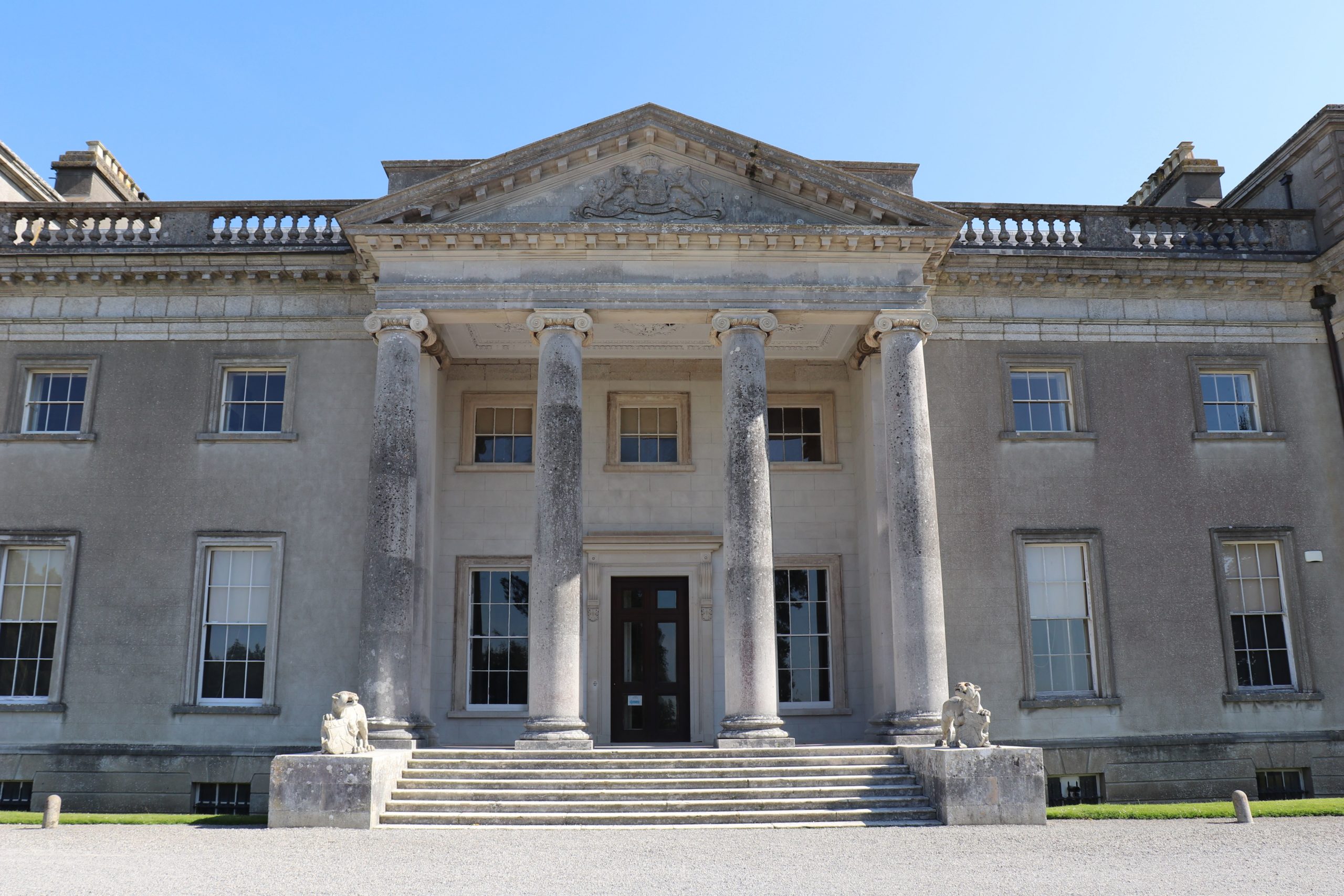Gandon designed Emo Court in 1790 for John Dawson, the First Earl of Portarlington. When the earl died in 1798, the house was incomplete. No more work was done until the 1830s, when the second earl completed the garden front and commenced work on the interior. Starting in 1860, the third earl oversaw building of the copper dome on the rotunda, as well as work on the interior and construction of the a bachelor wing.
When the last of the Portarlingtons left Emo Court in 1920, the house fell into decline. The Jesuits purchased the house in 1930 and used it as a seminary. In 1969, the order sold Emo court to Major Cholmley Dering Cholmley- Harrison who began the laborious process of restoring Emo Court and its grounds. Today Emo Court and Parklands and its 250 acres are owned and managed by the Office of Public Works.
Gardens
At the front of the house the Wellingtonia Avenue stretches for 1 mile. It is named after the Sequoiadendron giganteum, which line it. A beech walk behind the house leads to the nursery lake, which covers an area of 25 acres. Closer to the house there are formal lawns with a number of statues. The Four Seasons statues represent Winter, Spring, Summer and Autumn.
The bronze statue of Polyhymnia sits near the house and is surrounded by catmint (nepeta). The Huntsman and His Dog can be found in the area known as ‘the Clucker’. Bacchus stands in ‘the Grapery’ while Ceres awaits visitors at the end of the yew walk.
Behind the house, the arboretum covers approximately 20 acres. Here, grass pathways meander through an impressive variety of trees such as the Bhutan Pine, the Tulip Tree (Liriodendron Tulipefera) the Handkerchief Tree (Davidia involucrata) and cedars including the Blue Atlas Cedar and the Cedar of Lebanon.
A Walnut tree is a source of food for red squirrels, which live on the grounds. So is the large Spanish chestnut, which produces edible chestnuts. The bark of this tree has a wonderful texture. Also interesting is the lime tree avenue. It pre-dates Emo Court and is testament to the original building, Dawson Court.






